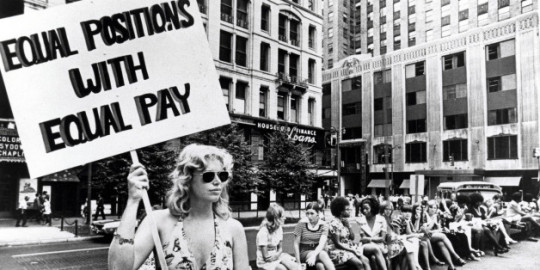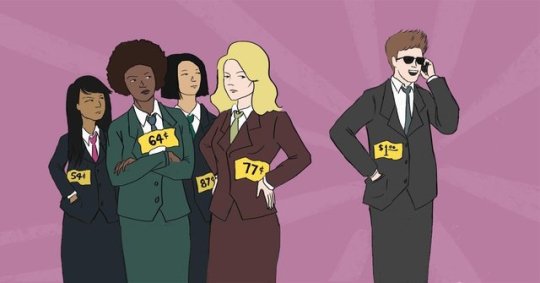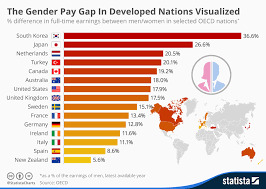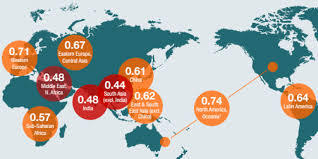Text
Caitlin,
This has to be my favorite blog so far because this is a very big issue today. Not even with just women but those of minority descent. The shows that are on tv (the watchable ones) have their characters portrayed by those who don't really suit the actual show. My blog is similar because I'm talking about the women issues and you're doing the same thing. Like you said 80% of males are in the industry while there are only 20% of women something's got to change. Besides I'd rather watch a show with females any cause greys anatomy is my favorite show and all the girls there rock. Great blog, great topic, and even better research hopefully the issues females face today will soon change.
Representation on the Big Screen
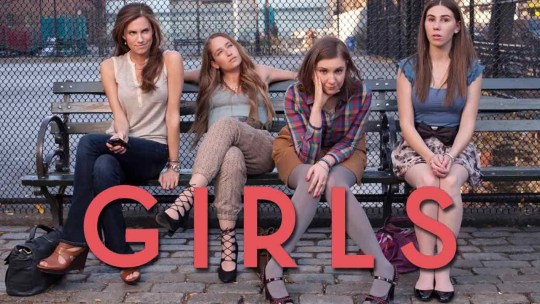
In a study on female representation, Dr. Martha M. Lauzen (2016) tracked females representation in Hollywood. In her study she used empirical data by finding a random tv show episode and seeing how many females were physically in the episode, and how many female names were on the screen credits. Viewing a few thousand tv episodes of all different shows, she closely watched the female characters and what their role was. After they used this for their empirical data, she watched the end credits to see how many females were behind the camera as well. Her study found that almost 80% (Lauzen 2016) of all roles on tv were male roles. That is only 20% of female roles altogether. With this information she found that there are even less than that number for females that are behind the screen. Lauzen’s (2016) research also concluded that when there are more females behind the screen, there are more in front of it. In her study, she also looked at what she calls “the leadership role.” (Lauzen 2016.) She found that men also tend to have the role of a leader most often as well. Whether that leader role includes the main protagonist of a show, a leading doctor or a plane crash survivor that is trying to lead other victims of the crash. Her empirical data of gender representation in the entertainment industry also led her to the conclusion that there are more females in the broadcasting genre than any other category. Not only did she find that there are more females in broadcasting, but her research mentioned how they tend to be a more diverse group of people as opposed to other genres of the entertainment industry. While her study is long and detailed, she mentions how there has literally been no change in the entertainment industry in the last ten years, in terms of female representation. Another interesting fact that Lauzen (2016) found was that females on screen tended to be vastly younger than males. Lauzen (2016) also discusses in full detail the importance of relationships with females are, in the entertainment industry. Shows that had female creators or producers, tended to have a stronger female presence in front of the screen, empowering females. Lauzen (2016) like Hankin (2007), came to the conclusion that the more females working behind the screen, the more influence and push there will be for more female presence in front of the screen. Lauzen (2016) like Hankin (2007) also says that this leads to a sense of female empowerment and is vital to bridging the gender gap in the entertainment industry.
4 notes
·
View notes
Text
Maddie,
I found your blog so interesting and the topic hits home because I often look up these things on my own time. Its crazy to think how America is supposedly on the healthy incline but issues like these are still happening. Especially in the areas of poverty where its hard to even get food at least there should be something in place to help their proper nutritional values in everyday. Lastly, the double disadvantage section made me want to look up more information about this on my own. Your blog is on point good luck.
Kedel :)
The prevalence of obesity in the United States is linked to race and socioeconomic status. The rates of obesity among Whites, Hispanics, and African Americans are respectively, 32.4%, 38.7% and 44.1% (Bower, Thorpe Jr., Rohde, and Gaskin 2014). Many believe that this high obesity rate among minorities is linked to the accessibility of food stores and healthy food options (Bower et al. 2014). People who live in areas with lower socioeconomic statuses have fewer large supermarkets that offer healthier options, but have access to lower quality convenience-type stores that typically do not offer healthy foods (Bower et al. 2014). Bower et al. found that African American neighborhoods have the fewest number of supermarkets out of all the other ethnic groups, regardless of poverty levels (Bower et al. 2014). They also found that as socioeconomic status increases, the number of supermarkets that people have access to increases as well (Bower et al. 2014). They described a “double disadvantage” that African Americans face as a result of living in both racially segregated as well as impoverished areas (Bower et al. 2014).
1 note
·
View note
Text
Let’s Take a Look
Inequality in America has plagued us for centuries not allowing progression in the world including the areas of race, religious background, and gender. With those unethical gestures inequality has trickled down to every day life and into the work place. Suggested by Maslow that this treatment of gender inequality is damaging to a persons quality of life which is consistent with the gender inequality within pay wage gaps. There are different spectrum's of gender inequality in the workplace and different histories, behaviors, teachings, and beliefs that all take part in it. Cultural expectations, inequality at work and types of jobs, sexual harassment, male dominating behaviors, and other aspects all partake in the lack of equality in the workforce. Often cases the female work contributes heavily in the success of an area and is over shadowed because she is female. Thus equaling a minuscule wage compared to colleagues. Even with those certain laws in place people still discriminate and alienate especially in the work force. I hope to further show you the damages that gender inequality play into the work force and showing very interesting facts about the pay gap that further destroys the idea of equality. Thus without the movement for equality women will suffer and even those men too who aren't white it could be horrendous in the work place.
0 notes
Text
STEM
Science, technology, engineering, and mathematics are four of the fields in the work force where women are earning less then men. These are the fields that are pushing for brand new and innovative inventions that require the best of the best to complete their tasks. A substantial amount of individuals who declare majors in these areas are men but women are becoming prominent as well. Some of the jobs that are associated with these areas include building security systems that protect our very country, and those workers who help us stay safe every day most likely graduated from the top percentile of their classes. In the last 10 years, women increased their density in professional occupations, now making up 57 percent of the professional workforce, yet there is still a disparity when it comes to equality in the work force. In the book No More Invisible Man by Adia Wingfield, discusses the idea inequality in the work place and how people are often not themselves at work because they will either be judged and left uncomfortable, or if there is not a compliance with the norms they could be fired. Reading that book further opened my eyes to the inequality in the work force and how it damages the persons quality of life in ways that make them conform to society’s norms, especially by race and gender. The standard view for a good quality of life is health, happiness, and comfort and with that being said treating others in a way where they are alienated and aren't comfortable already takes from that. Money makes the world go around and often times makes people the happiest but what happens when you work hard or even harder because of the color of your skin or your gender and aren’t allocated the same pay because of it? “Women with Ph.D’s in science and engineering fields earn 31% less than men, according to a new study using previously unavailable data. The pay gap dropped to 11% when researchers took into account that women tend to graduate with degrees in fields that generally pay less than fields in which men get their degrees. The rest of the pay gap disappears when the researchers control for whether women are married and have children."There's a dramatic difference in how much early-career men and women in the sciences are paid. (Grabmeier ,2016) ,After reading an article posted by USA today they talked about the gap between women and man and could get a sense of the reasonings behind the pay gap. The results results suggest some workplaces lack of family-friendliness for women in these careers The importance of helpful family policies is supported by the fact that single and childless women tend to have less of a pay gap than those who are married and those who have children. About equal percentages of men and women are married or partnered, and more men (24%) than women (19%) in the study had children, but it is the married women with children who see the lower pay."Our results show a larger child-gap in salary among women Ph.D.s than among men. (Grabmeier ,2016) Some women may consciously choose to be primary caregivers and pull back from work and tend to their child but then there are others who have jobs that give them maternity leave. Whether you chose to bear a child and not work so much shouldn't affect your pay rate especially when you return back to work. You should be getting the full amount and until that transpires it'll be one of the reasons that deprive work place of equality.
0 notes
Text
Over the Years
Americas past equality issues play a factor in the battle women continue to face. Opposed to the adversaries women of all colors face unbeknownst to them their ancestors fought hard for equality. In 1920 the 19th Amendment to the U.S. Constitution granted American women the right to vote—a right known as woman suffrage. At the time the U.S. was founded, its female citizens did not share all of the same rights as men, including the right to vote. Fast forward to 1964 with the Civil Rights Movement and Acts that prohibited employers discriminating against people because of their race, color, religion, sex, or national origin. The Equal Pay Act of 1963 that came the year before that was implemented to prohibit sex-based wage discrimination between men and women in the same establishment who perform jobs that require substantially equal skill, effort and responsibility. However, with these anti-discriminatory laws and acts in place we still see underlying substantial differences in wages by both race and sex. Evidently showing progress later on in 2010, President Obama initiated the National Equal Pay Task Force, comprised of experts from four federal agencies—the Equal Employment Opportunity Commission, the Department of Justice, the Department of Labor, and the Office of Personnel Management—in an effort “to crack down on violations of equal pay laws - so that women get equal pay for an equal day’s work.” (DuBose, 2017; PG 453) With that being said theres ways to help and ensure females get the pay the deserve but its still a battle once it is over the bridge between equality and actuality will meet.
0 notes
Text
Theories of Discrimination
There is always a reason behind an action. When it comes to discrimination in the labor market and the creation of the pay wage gap there are multiple theories that are consistent with this occurrence. “Economic models of discrimination may be divided into two main classes - competitive models in which agents act individually and collective models in which one group acts collectively against another” (Race and Gender in Labor Market ) Statistical discrimination and prejudice are two types of discrimination that occur most frequently in the labor market. Preference is used in hiring depending on occupation and the skills needed or the ideas in which those hiring have for their place of employment. In the same article, there is mention of the idea that the greater the number of prejudiced employers and the stronger the intensity of their preferences, the greater the wage gap. (Race and Gender in Labor Market) Another theory that accounts for why the wage gap hasn’t improved is in relation to the increasing wages over the years for both men and women according to Joshua Hatch’s, Gender Pay Gap Persists Across Faculty Ranks, “Even though the year-over-year percentage increases in average salaries were higher for women across most ranks, the pay gaps widened or stayed virtually unchanged. That's because male faculty members already earned more than their female counterparts.” (Hatch, 2017) This idea elaborates on the reasoning behind the widening pay gap and discusses how this gap persists because the already present disparities in pay wages between men and women. In other words, the gap continues to be present because the men have always earned more and although wages go up, they do not account for the gap between the wages. To further more add onto this theory I ask myself in other ways why does this continue to happen even with laws in placed? I figured out through research that the factors of age, education and health play a crucial part in terms of the gap still being there and progressively widening throughout the years. Stated by Blinder “ By far the largest part of the differential is accounted for by the age- wage profile. This is in marked contrast to the structural differential be- tween the races, where age profiles were not terribly important. In our esti- mates, white women exhibit an almost flat (in fact, slightly convex) age- wage profile-that is, their wages do not show any tendency to rise over the life cycle, whereas wages for white men certainly do. Thus, the failure of women in the same education-occupation category to rise on the eco- nomic ladder over their working lives is seen to be the single largest cause of the male-female differential.” (Blinker, 447; 2007) Without the seeing each other as one and not having labels to place men and women in different categories this will not improve work related equality or even outside the work place.
0 notes
Text
Stratification
In my research I tried to figure out why this issue continues to purplex the work place today. Knowing how society is there are certain classes they place you in and that is called stratification. Social stratification is the hierarchical organizational structures of social inequality from rankings to status groups which is prominent in society. Social stratification means division of members of a society by social status. You may ask what this has to do with anything but because of stratification, there is a placement of “handicaps” in certain areas like the work force. I say that because in my research I’ve noticed that different occupational roles carry different amounts of prestige and of course more income. If you're a man working for a prestigious firm for example and your female counterpart comes along, you will both be placed in different groups because of your gender and also based on the skills you possess and appearance especially. As a woman you would be doing the same job but employers who discriminate will not allow you to handle anything difficult due to the fact that they already placed you in a different group because of not only your gender but also what they think that you can handle. With personal experience I think we've all had a similar moment like this and you know the feeling of disgust and disappointment. This can allow a person to feel a sense of prejudice placed upon them because they are being discriminated for their gender, and not evaluated based on their work ethic. As I researched more about how stratification and the gender gap connect I found a quote that talks about the worlds fight against the gender wage gap and how dynamic it is around the world. As I mentioned earlier with the gender wage gap and how it is around the world in certain places it gets better and the further you travel it gets different in ranges. “The dynamic of the gender gap in the European labour market in the years of economic crisis In European countries, the general labour market conditions and the levels of the gender gap in the years preceding the economic crisis were very different. On the one hand, we have the most developed Northern countries where, even with medium levels of gender pay gap and gender segregation, the good mix of social policies favoured the highest levels of female participation. Moreover, the active labour policies and the generally favourable economic conditions drove toward the lowest unemployment rates. On the other hand, in the Southern countries, the lack of appropriate labour policies and the generally precarious economic conditions favoured high levels of unemployment for both females and males. In addition, the lack of flexibility and the persistence of social welfare and family strategies that are associated with the male main breadwinner model, which is characterized by the lack of childcare and other services needed to reconcile work and family life, produced the lowest female participation rates.” (Rocca & Rosalia, 2016; PG 1334) Once we start to clear up the problem whether its in the states or internationally it'll be a start at equality without that push so the rest of the world could catch on women will be stagnant in their race to equality with their wages.
0 notes
Text
Global Division
Not only in America is there discrimination that occurs within everyday activity and in the work force, but gender and pay inequality is also a prominent thing that happens all over the world. In Australia the pay gap his risen but only by a small percentage. All over the world there is a widespread of issues but with but atlas theres places trying to fix that. “Gender pay gap in Australia is the difference between the average weekly earnings of female and male workers in Australia, calculated on the average weekly ordinary time earnings for full-time employees published by the Australian Bureau of Statistics. The gender pay gap excludes part-time, casual earnings and overtime payments. Australia has a persistent gender pay gap. Since 1990, the gender pay gap remained within a narrow range of between 15 and 18%. Statistic shows the gender pay gap has risen to 18.2% in 2014, the widest the gap has been for two decades.” (Cassells, 2009; PG 14) Clearly the pay gap is widening in areas outside the United States as well. Not only has the pay gap in America increased but it also increased in the far east of Australia. In other areas of the world they are trying to cut down on the gap. Due to the fact that it’s a problem across the globe one of the countries that attempted to fix the gap was Europe. According to Antonella Rocca “Closing the gender gap in the labor market is one of the main goals of the European Union and part of a wider effort to eliminate social inequalities. In recent decades, all developed countries have suffered a deep global economic crisis, that has increased social and economic inequalities. In Europe, the crisis involved problems of European stability and growth, but the crisis did not affect the euro-area countries to the same extent, and the consequences and recovery were correspondingly asymmetrical.” Movements towards minimizing the impact of the page gap is taking place in some areas. There is still progress and steps that ought to be taken to initiate and reinforce this as I discuss in my next post.
1 note
·
View note
